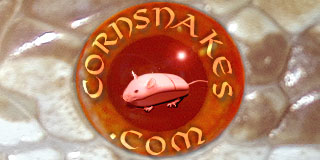I'm trying to figure this one out:
Person A is capable of understanding that a pair of normals is het for amel, anery, and hypo. They are also capable of understanding that the results of breeding those two will include amels, anerys, hypos, ghosts, snows, yadda.
However, this same person who understands all of the above, is simultaneously going to be confused by the usage of "ghost" to refer to the combination of hypo/anery, and "snow" for the combination of anery/amel.
:shrugs:
-----
When I want to multiply a number by 999, I do not multiply by 9, multiply by 90, multiply by 900, and then add those three numbers to get to the answer. Instead, I throw 3 zeroes on the end and then subtract the original number. Am I "doing it wrong?" (Some of my math teachers seemed to think so because I didn't show the "work" they wanted to see.

) Is it "999x" or "1000x - x?" Aren't they the same thing?
When I am crossing two amels het for anery together, it is easier to think of them as "amels het snow" in that instance because there will not be any "just anery" offspring coming from the clutch. Are they more or less confusing as "amel het anery," or "amel het snow?"
It depends on what you're crossing, and how the math works out in your head.
Personally, I would list a normal het amel/anery/lavender as "Normal het amel/anery/lavender (snow/opal)" and I would list a normal het amel/anery/hypo as "Normal het amel/anery/hypo (ghost/snow)" because this includes any potentially relevant information.
